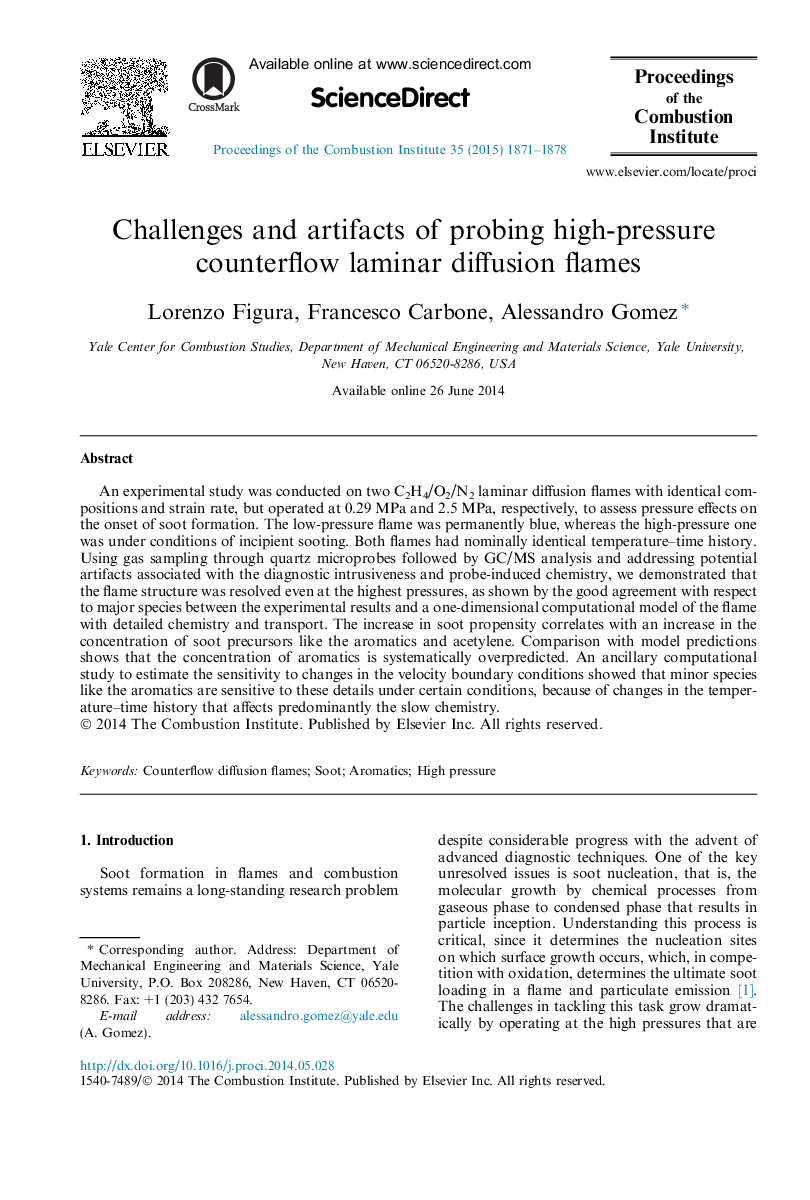| Article ID | Journal | Published Year | Pages | File Type |
|---|---|---|---|---|
| 6679333 | Proceedings of the Combustion Institute | 2015 | 8 Pages |
Abstract
An experimental study was conducted on two C2H4/O2/N2 laminar diffusion flames with identical compositions and strain rate, but operated at 0.29Â MPa and 2.5Â MPa, respectively, to assess pressure effects on the onset of soot formation. The low-pressure flame was permanently blue, whereas the high-pressure one was under conditions of incipient sooting. Both flames had nominally identical temperature-time history. Using gas sampling through quartz microprobes followed by GC/MS analysis and addressing potential artifacts associated with the diagnostic intrusiveness and probe-induced chemistry, we demonstrated that the flame structure was resolved even at the highest pressures, as shown by the good agreement with respect to major species between the experimental results and a one-dimensional computational model of the flame with detailed chemistry and transport. The increase in soot propensity correlates with an increase in the concentration of soot precursors like the aromatics and acetylene. Comparison with model predictions shows that the concentration of aromatics is systematically overpredicted. An ancillary computational study to estimate the sensitivity to changes in the velocity boundary conditions showed that minor species like the aromatics are sensitive to these details under certain conditions, because of changes in the temperature-time history that affects predominantly the slow chemistry.
Related Topics
Physical Sciences and Engineering
Chemical Engineering
Chemical Engineering (General)
Authors
Lorenzo Figura, Francesco Carbone, Alessandro Gomez,
